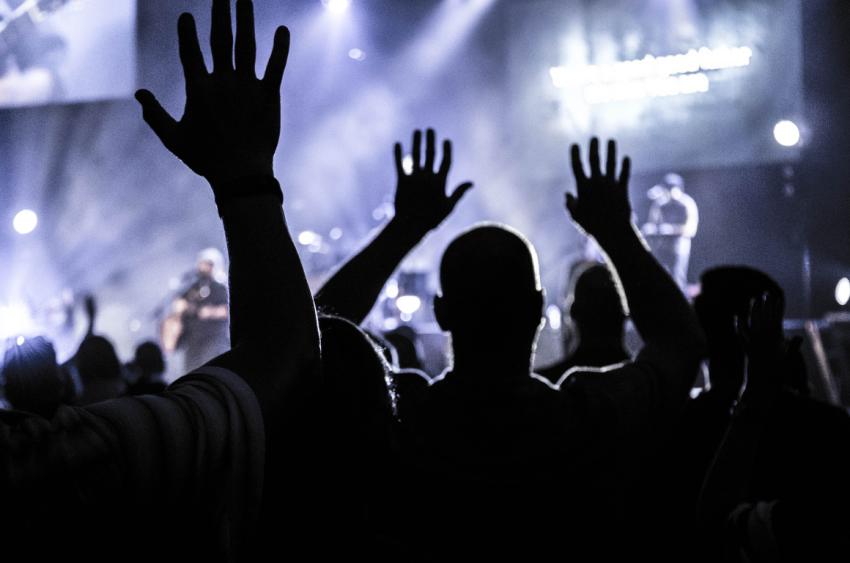Photographing concerts is an exciting and fun, to capture the energy and atmosphere of live performances. But, you may be wonder if you can you use flash photography at a concert?
Answer: Don’t use flash photography at concerts. It’s distracting to both performers and the audience and is often prohibited by venue policies. Instead, photographers should rely on alternative techniques for shooting in low light.
Flash Alternatives in Concert Photography
There are several alternatives to using flash in concert photography. Concert photographers utilize a combination of fast lenses, high ISO settings, and precise exposure adjustments to capture high-quality images even under low light conditions. A fast lens with a wide aperture (such as f/1/8 or f/2/8) enables more light to enter the camera, which is essential for capturing clear images at shutter speeds that are sufficient to freeze motion on stage
When preparing for a concert shoot, photographers must become acquainted with their camera’s high ISO performance. High ISO capabilities enable capturing images in low light without flash, although this may result in increased noise. Modern cameras can handle high ISO settings effectively, allowing for shooting at ISO 3200 or higher without significant loss of image quality.
In addition to gear and settings, concert photographers need to develop an intuitive understanding of concert lighting and how to adapt to it as it changes throughout the performance. A skilled concert photographer will anticipate dramatic lighting shifts, such as spotlight changes and strobing effects, and be prepared to adjust their settings accordingly.
Techniques and Settings
Concert photography typically prohibits the use of flash. Instead, photographers rely on various techniques and settings to capture high-quality images in low-light conditions.
Concert Photography Settings
To ensure enough light enters the camera, photographers often utilize a wide aperture (f/1.8 or lower) to create a shallow depth of field, isolating the subject from the cluttered stage background. Another essential aspect is the ISO setting, which should be set as high as necessary while still maintaining acceptable image quality. Many photographers opt for ISO values around 1600-3200, depending on the camera’s capabilities.
Shutter speed should be high enough to freeze the action and prevent motion blur, typically around 1/200th of a second or faster. However, you may need to adjust the exposure to balance it based on the stage lighting conditions.
Related: Best Settings for Concert Photography: Tips and Tricks
Composition Tips
Finding the right composition during a concert can be challenging due to constantly changing stage lighting and performer positions. Here are some tips to enhance concert photography compositions:
- Focus on the artist’s emotions and expressions by capturing close-up shots.
- Incorporate the stage lighting to add drama and depth to the image.
- Look for interesting angles and perspectives, such as shooting from the side or from the front row.
- Pay attention to the background and try to keep it uncluttered by utilizing the shallow depth of field.
Focusing Techniques
Accurate focusing is essential in concert photography due to the low-light environment and moving subjects. Some effective focusing techniques include:
- Single-point autofocus (AF): This mode allows the photographer to select a specific focal point, making it easier to lock onto a target, like the artist’s face or a particular instrument.
- Back-button focus: By separating the focusing function from the shutter button, it allows for more precise control and enables the photographer to quickly switch between subjects without the need to refocus.
- Manual focus: In situations where the autofocus system struggles, such as when there are multiple layers of lights or objects in the scene, manual mode can give the photographer better control over the sharpness and depth of field.
By using these techniques and settings, photographers will be able to capture stunning, professional-quality images without relying on a flash.
Related: Best Cameras for Concert Photography in 2024: A Buyer’s Guide
Concert Photography Etiquette
Respecting Performers
Concert photographers must be aware of the ethics and etiquette when capturing live performances. Respecting the performers is crucial. Using flash can be distracting for performers and affect their ability to perform at their best. A professional and respectful photographer will choose gear and techniques that minimize disturbance, such as fast lenses and higher ISO settings.
Respecting Audience Members
Apart from being mindful of the performers, concert photographers should also consider the audience members who have paid to enjoy the show. Flash photography, apart from being distracting for performers, can also be annoying for the crowd. Distractions can diminish the overall experience for those who attend the event, and photographers must be considerate of their impact on the audience.
Related: Can You Bring a Camera to a Concert? (And Best Practices)
Last Updated on January 27, 2024

